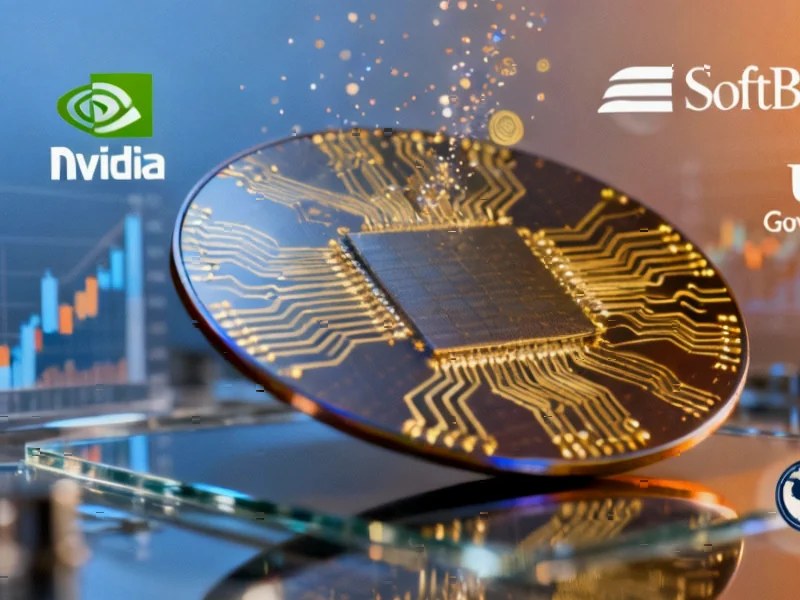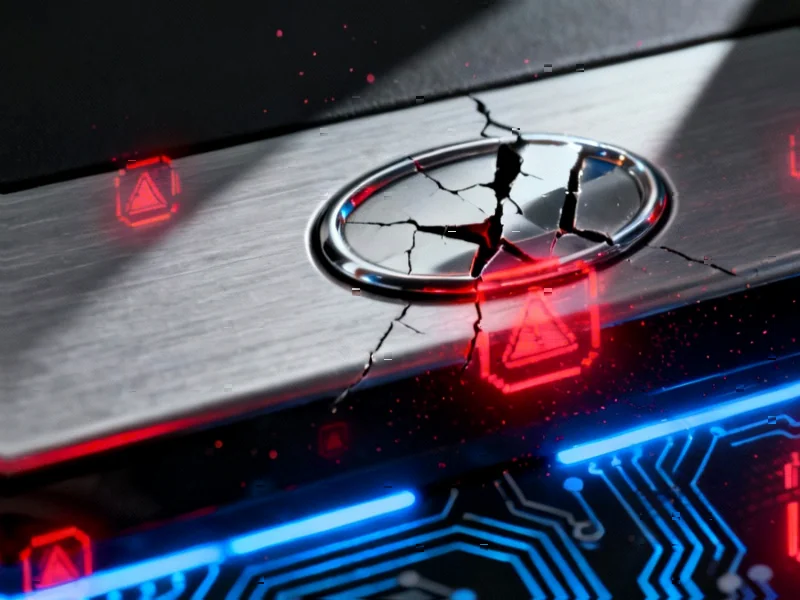Massive Investments Inject Hope Into Intel’s Turnaround Bid
As Intel prepares to release its third-quarter earnings, the chip industry is watching closely to determine whether recent multibillion-dollar investments represent a genuine turning point or merely temporary financial relief. The company has secured an unprecedented combination of private and government funding, including $5 billion from Nvidia, $2 billion from SoftBank, and an $8.9 billion stake from the U.S. government representing approximately 10% ownership.
Table of Contents
These capital injections have propelled Intel’s stock performance, with shares nearly doubling in value this year—outpacing even AI market darling Nvidia. However, this optimism contrasts with expectations of a 1% sales decline to $13.14 billion for the quarter, highlighting the complex narrative unfolding around the semiconductor pioneer’s recovery efforts.
Cash Infusion Comes With Financial Trade-offs
The recent investments provide critical breathing room for Intel’s strained finances, particularly following former CEO Pat Gelsinger’s ambitious manufacturing expansion that pressured margins. The capital arrives as new CEO Lip-Bu Tan scales back those expansion plans while maintaining focus on the crucial 18A manufacturing technology.
However, Wall Street analysts note that the financial benefits come with dilution consequences. The issuance of new shares to accommodate these investments is expected to impact per-share earnings, with the third quarter projected to show a loss of 22 cents per share and adjusted earnings of just 1 cent per share.
“It will lead to dilution, but in my opinion, share dilution is the least of Intel shareholders’ worries,” commented Ryuta Makino, analyst at Gabelli Funds, reflecting the prevailing sentiment that immediate cash needs outweigh dilution concerns., as earlier coverage, according to technology insights
Structural Challenges Remain Despite Financial Boost
While the investments signal confidence in Intel’s direction, industry observers caution that they don’t automatically resolve the company’s fundamental competitive challenges. Intel continues to lose market share in both PC and server CPUs to rivals like AMD, while Arm-based architecture presents an ongoing threat to Intel’s legacy x86 blueprint.
Joe Tigay, portfolio manager at Rational Equity Armor Fund, summarized the key questions investors are asking: “Putting all recent investments together – What does Intel’s big picture look like? What does their cash look like?” These concerns highlight that financial engineering alone cannot solve Intel’s strategic positioning issues.
Bright Spots Emerge in End Markets
Despite persistent challenges, several market trends are working in Intel’s favor. The PC market is showing signs of recovery, with worldwide third-quarter PC shipments increasing 8% according to preliminary Gartner data, driven by a Windows refresh cycle. Intel’s PC chip unit is expected to report an 11% revenue increase to $8.12 billion.
Perhaps more significantly, Intel stands to benefit from the AI-driven data center expansion, even without a dominant position in the GPU market. The company’s data center unit is projected to grow 18% to $3.95 billion as server CPU demand increases alongside GPU deployments.
Intel’s upcoming Panther Lake PC processor, slated for initial shipments before end-2025, represents the company’s first chip built on its 18A manufacturing technology—a crucial test for both its product roadmap and its contract manufacturing ambitions.
The Road Ahead: Execution Over Financing
The substantial investments provide Intel with runway, but industry analysts emphasize that execution remains the critical variable. “The markets are giving Intel a major pass on their current struggles,” noted Tigay. “Intel has a great deal of leeway based on the expectations of what the new partnerships will bring and their new product designs.”
Success will depend on multiple factors: timely delivery of the 18A manufacturing technology, competitive positioning against AMD in core CPU markets, and meaningful progress in the AI accelerator space where Intel plans to launch a new data center chip next year.
As Intel navigates this complex transition, the third-quarter results will provide important indicators about whether financial stabilization is translating into operational momentum—or whether the company’s deeper structural issues require more fundamental solutions.
The semiconductor industry continues to watch Intel’s transformation journey, recognizing that the company’s fate has implications across the global technology ecosystem. For comprehensive technology industry coverage, visit Reuters for trusted news and analysis.
Related Articles You May Find Interesting
- Microsoft’s Visual Studio Gets AI-Powered Planning Feature to Streamline Complex
- US Digital Asset Transactions Surge 50% Following Policy Shift Under New Adminis
- Climate Innovation Funding Gap Threatens Vulnerable Nations’ Resilience
- Beyond the Golgi: Advanced Proteomics Maps Cellular Transport Networks and Disea
- Unlock Hidden Performance: How Undervolting Transforms Your Gaming Experience
References & Further Reading
This article draws from multiple authoritative sources. For more information, please consult:
This article aggregates information from publicly available sources. All trademarks and copyrights belong to their respective owners.
Note: Featured image is for illustrative purposes only and does not represent any specific product, service, or entity mentioned in this article.




nom6y0